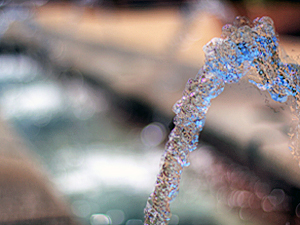The Triple Threats of Our Coming Water Crisis

I know that talking about infrastructure isn’t a sexy blog topic. It’s about as exciting as doing laundry. But here’s the thing: We have to do it.
According to arecent reportfrom theUrban Land InstituteandErnst & Young, there is no greater infrastructurechallenge facing the countrytoday than water.
We’ve got a triple whammy going on.
First whammy:The U.S. uses the most water per capita in the world -- more than 656,000 gallons annually. That’s very close to the amount of water in an Olympic-sized swimming pool. Compare that to China, which uses less than 186,000 gallons per person each year.
The report calls for increased water conservation. But here’s the consumer truth: Water conservation just isn’t high on their priority lists. In Eco Pulse 2010, fewer than 20 percent said they’d installed low-flow toilets or showerheads. Only 6 percent said they’d installed low-water landscaping. The most popular water-conserving behavior? Taking shorter showers, but fewer than half said they were doing that.

Second whammy:Our dilapidated infrastructure is leaking about 1.25 trillion gallons of water every year -- that’s about the same amount of water residents of L.A., Miami and Chicago use, combined. Political turf wars, lack of funding for improvements and low water bills that don’t cover the true costs of treating and delivering water stand in the way of repairing the country’s leaky old pipes.
Third whammy:The population is still growing in water-constrained parts of the country -- putting even more pressure on limited water supplies. The report says that the U.S. is expected to add more than 120 million additional residents in the next 40 years, despite current water shortages. “We are starting to see the limits of where people can live,” stated the report. “Water profligacy is an American way of life.”
As marketers, there’s not much we can do in the political arena or to control population growth and migration. But what we can do is attack the first whammy -- conservation -- by producing more water-saving devices. By helping everyday Americans become more aware of the problem and offering affordable, practical, attractive solutions. By saving more water in our offices, factories and job sites. By making water conservation the next big topic of conversation.
How will you start your customers talking about saving water?
As Director of Insight forShelton Group, Karen Barnes serves as the voice of the consumer for the firm. The original version of her post was published on theShelton Group blogand is reprinted with permission.
Top image CC licensed by Flickr userkevindooley.
Chart courtesy of ULI, Ernst &Young report, "Infrastructure 2010: Investment Imperative."





